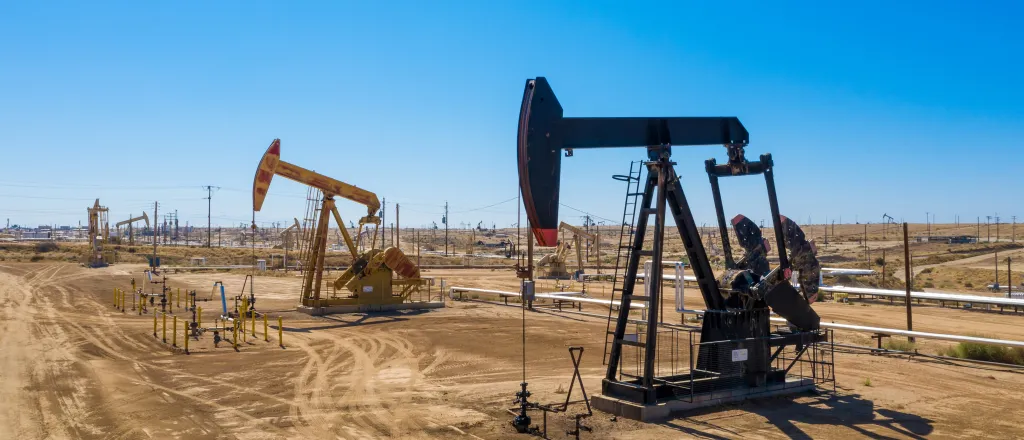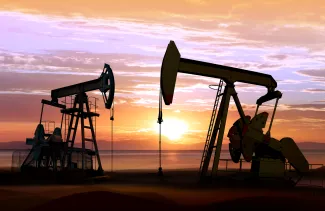
Permian Basin producers continue to break production, methane reduction records
As Texas producers continue to break oil and natural gas production records, they also continue to reduce methane emissions, according to a new report published by Texans for Natural Gas, a campaign of the Texas Independent Producers and Royalty Owners Association (TIPRO).
Opponents of the oil and natural gas industry argue the industry is a main culprit of climate change when the industry, led by Texas, has implemented a range of technological advances to reduce emissions and preserve natural habitat, including for lizards in the Permian Basin in the West Texas desert.
The Permian Basin accounts for nearly 40 percent of all oil production and nearly 15 percent of natural gas production in the U.S., according to the Federal Reserve Bank of Dallas. It spans more than 86,000 square miles – roughly 10 times the size of New Jersey. Roughly 250 miles wide and 300 miles long, it has more than 7,000 fields.
Most production in the basin, 70 percent, occurs on private land in Texas.

© iStock - gguy44
Preliminary 2024 data for the Permian Basin points to a 14 percent reduction in flaring, according to the TNG report. Flaring intensity is the leading industry standard used to calculate methane and flaring emissions relative to production output.
"American oil and gas producers, especially in the Lone Star State, have always been committed to meeting increasing energy demand responsibly. Our most recent methane and flaring emissions data proves that the United States can fulfill global energy demand while keeping emissions low thanks to the industry’s dedication and innovation," TIPRO president Ed Longanecker said.
This is after the Permian Basin reached one of its lowest methane intensity levels in 2023, at 0.49 metric tons per barrel of oil equivalent (MT/boe). Since 2011, Permian methane intensity has declined nearly 83 percent as total production increased by 482 percent over the same time period, according to the report.
Flaring intensity dropped from 60 percent in 2019 to 8 percent from 2021 to 2022, according to a previous TIPRO report.
In 2023, flaring intensity in the Permian Basin was 65 percent lower than it was in 2015, when flaring reached a decade high, TIPRO notes. Flaring intensity declined by 47 percent from 2018 as production increased by nearly 25 percent over the same time period, according to the data.
“Thanks to constant innovation and improvements in production processes as well as increased use of new technologies such as AI, the oil and natural gas industry is making incredible progress protecting the environment and bolstering our energy security,” Texas Oil & Gas Association president Todd Staples said. “Producing the irreplaceable resources that fuel modern life and safeguarding the environment are not mutually exclusive, and this report further underscores this industry’s continued commitment to achieve both while also making us cleaner, stronger, and better.”

“The Permian’s record levels of production in 2023, combined with the region’s overall reductions in methane and flaring intensity mark important progress for the industry as the United States hit the second-highest record for oil and gas production that year, with the Permian providing roughly two-thirds of all U.S. natural gas production,” he said.
Longanecker also notes that emissions can be reduced even further by expanding pipeline infrastructure and permitting reform.
The completion of several high-capacity pipeline projects in 2024 has already bolstered Texas’ position as a leader in energy infrastructure, he argues.
Expanding pipeline infrastructure is “urgently needed to safely and efficiently transport energy and reduce flaring," he said. "The oil and gas industry will continue to prioritize innovation and safety to drive emissions even lower, but a clear, predictable and permanent permitting process is critical to safeguarding responsible energy development for decades to come."
Longtime industry executive Richard Welch agrees, arguing Congress and the Trump administration can implement significant permitting reform, “repeal decades of senseless and duplicative regulations, and restore regulatory order by returning power to the states.”
“While states like Texas can approve and begin construction on critical projects in a matter of months, federal approval for natural gas projects, for example, including obtaining a permit and beginning construction, takes an average of 3.5 years,” he said. Delays hamper economic growth, energy security and job creation, he argues.
Over the past 50 years, federal bureaucrats implemented a slew of regulations and, along with multiple judicial rulings, created duplicative, contradictory and unnecessary requirements, he said, which Congress and the Trump administration have the opportunity to reverse.

















